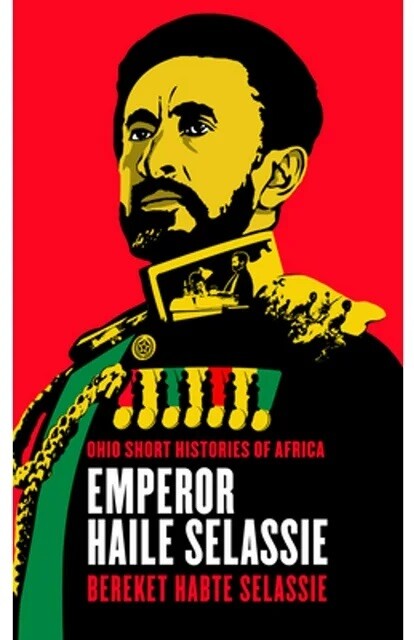Reviewed by Charles W. McClellan

This slim volume by distinguished scholar of African studies and law, Bereket Habte Selassie is part of Ohio University Press’s “Short Histories of Africa” series. This offering evinces the OUP’s progression from its usual focus on South African personalities.
Unquestionably, Emperor Haile Selassie is among the preeminent figures of twentieth-century Africa, although today’s students know little of him. Excellent biographies exist of the emperor, including a dictated two-volume autobiography, but need for a work oriented specifically for students in introductory courses on world and African history remained. Bereket Selassie’s offering fills that void. As an insider, Bereket possesses intimate knowledge of the emperor’s administrative style but also finds himself at odds with the pace of change and the emperor’s Eritrean policy. Bereket’s personal recollections may appear self-serving to some, but overall they are more instructive than detracting.
Editorial restrictions undoubtedly limit Bereket’s breadth of content and analysis of issues, but he has done well in capturing the essence of the man and the challenges he confronted. An earlier generation perceived the emperor as a stoic, enigmatic character intent on modernizing his country while defending it against the last vestiges of European colonialism. The younger generation knows little of this, and its references to Ethiopia revolve more around images of drought, famine, Live Aid, and Jamaica’s Ras Tefarians.
As successor to visionaries like Tewodros and Menilek II (some would include Lij Iyasu), Haile Selassie conceptualized modernization more by what his European travels suggested than by any deep understanding of the complex processes involved. For that, he placed great faith in the Ethiopian youth he would educate, trusting in their knowledge, experience, and loyalty. He could be harsh on and admonishing of those who failed or resisted his charge. Building upon a rudimentary Italian inheritance, he brought considerable change to administrative and tax structures and expanded communications by air, land, and electronics. But agriculture and land reform were largely untouched. The capital, Addis Ababa, generally reflected his legacy: a record that was rather spotty—more facade than reality. His constitution, though introducing limited democracy, nevertheless left him firmly in charge; he seemed genuinely surprised and aggrieved by the failed 1960 coup and by the subsequent student movement questioning Ethiopia’s progress.

Even after the disaster of the Italo-Ethiopian War (1935–1941), he remained committed to collective security, supporting the United Nations’ efforts with Ethiopian troops in Korea and the Congo. He embraced the American Peace Corps early on; widely admired, they too became a target and fulcrum for the emerging student movement. Inspired by Ethiopia as a symbol of pan-Africanism, the emperor utilized his prestige to establish the Organization of African Unity (now African Union) headquarters in his capital, although he certainly found Nkrumah’s vision for the continent suspect.
The emperor’s vision of modernization, commitment to collective security, and methods of utilizing authority are all fundamental issues that ideally promote student intellectual engagement; Bereket Selassie carefully frames the basic issues of Ethiopian historiography for debate. Despite omissions, this work should stimulate broader discussion and therefore be widely recommended to student examination.
Charles W. McClellan Radford University
Originally published in The Historian, Volume 78, 2016-Issue 4
Main Image: Emperor Haile Selassie in Geneva in 1935. Photograph: Lucien Aigner/Corbis















